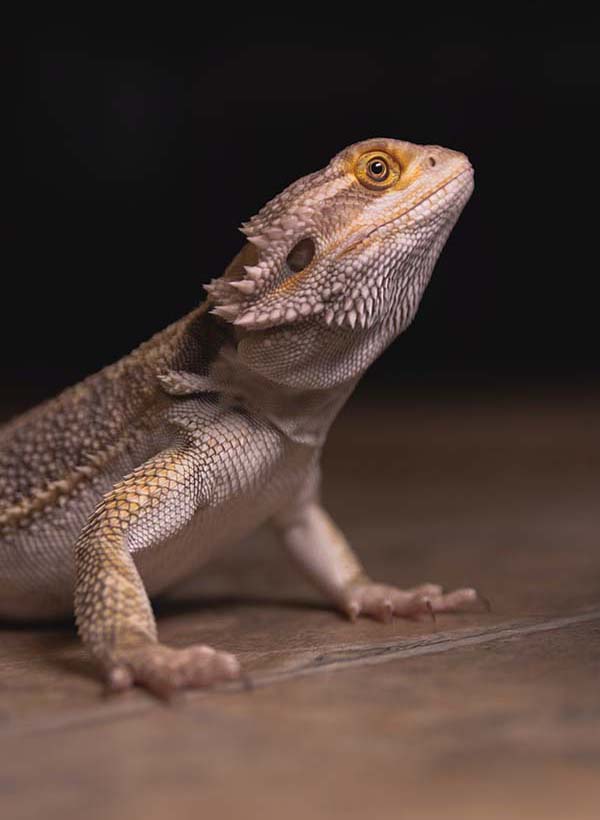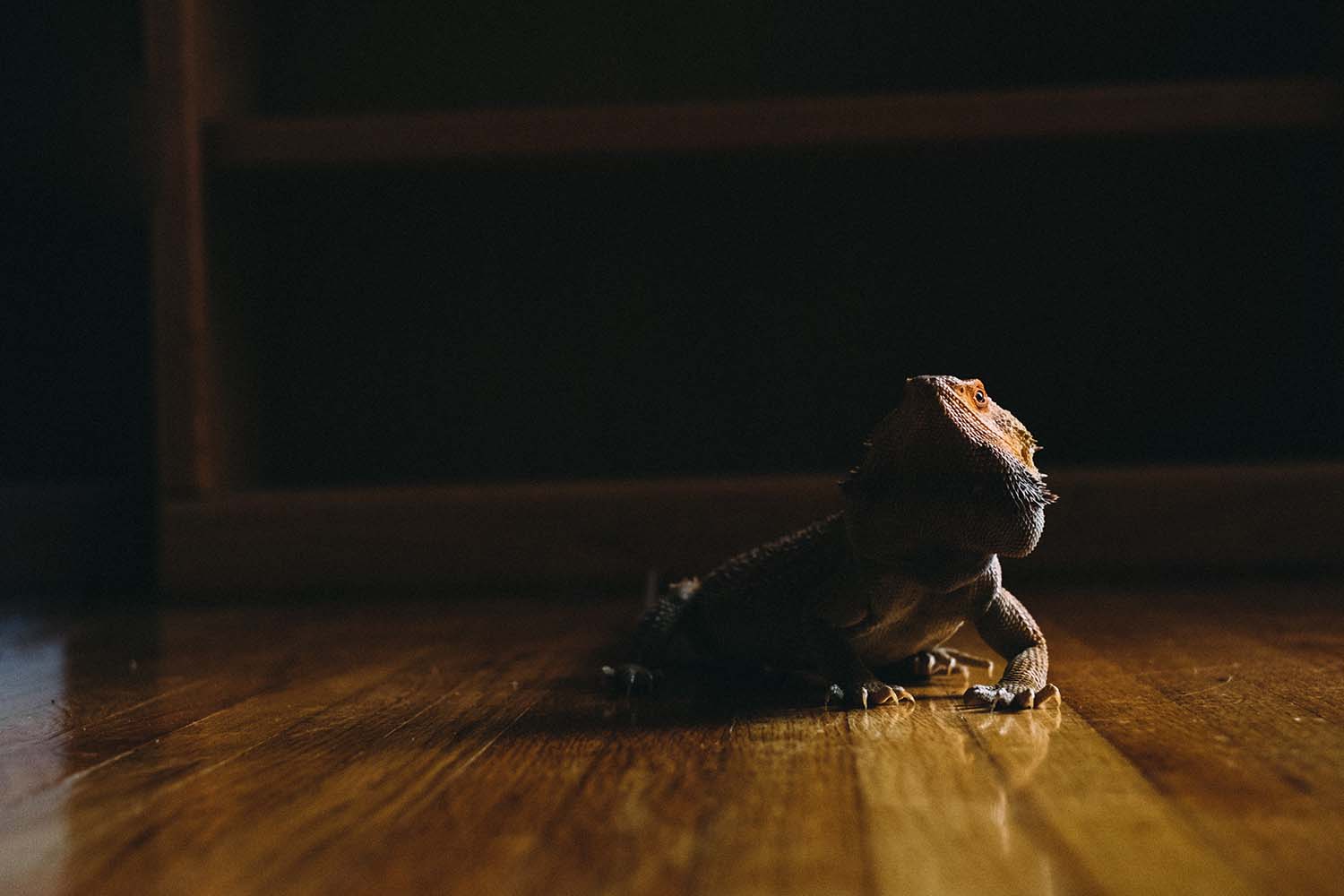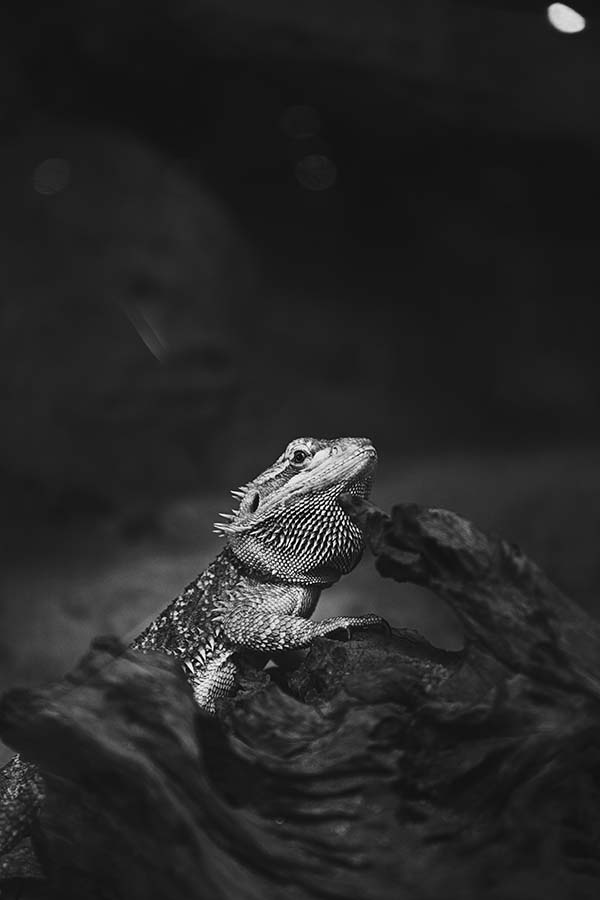When it comes to having house pets, all humans have their own preference of one type or more than one type. Customarily, this would be a dog, a cat, or even a fish. But sometimes reptiles are the pet of choice, especially for exotic pet lovers. Turtles or snakes to name a few. Then there comes the bearded dragon.

Photo, Jesse Cortez.
This lizard is native to Australia, but after 1960 no bearded dragons could be exported from Australia, which means no bearded dragons anywhere outside the outback were actually born there, as their average life expectancy is ten years if taken care of properly.
But the question is: do bearded dragons make good pets? Discover more…
Popularity: The most common species of these lizards that are in captivity are the pogona vitticeps, but there are other species of bearded dragons all native to different parts of Australia. Because there have not been any new bearded dragons brought into the United States, breeders have given us many morphs of these to keep the pet alive in the US and of course, to keep their pockets lined.
Although they have only been in the States since the 1990s, bearded dragons as pets are the most common reptile pet in captivity. This is because they have sociable personalities and are easy to take care of.
Size and Colour: A bearded dragon is 16 to 24 inches long, and only about one pound at full size. They will be at their full size once they are a year old; more than half of that length is its tail. Depending on the species of bearded dragons, the colour palette of their body will vary. But collectively, these lizard buddies carry all the colours of the rainbow and more. Sometimes even clear. Also, each time they shed, they change colour. Maybe subtly, but they do vary a shade or two.
The lizards will shed throughout the duration of their lives to accommodate their new bodies, so your pet will always be a new shape and colour to see.

Photo, Beth Teutschmann.
Diet: Bearded dragons are omnivores, meaning they consume insects, worms, fruits, and vegetables. There is also a commercially made food, as well. But generally, if they started their life eating insects, fruits, and vegetables, they will want to stick to that diet. Two things bearded dragons should not eat are fireflies and avocado; these items are extremely toxic to this lizard.

Photo, Ren Ran.
Fun Facts: The bearded dragon is a solitary creature. They like being by themselves and are easily stressed if another bearded dragon is in the same surroundings. They will immediately become territorial (except during mating season). Many bearded dragons can be seen waving their front leg or bobbing its head as a sign of being territorial. If you see a pile of bearded dragons, rest assured the one at the bottom of the pile is the least dominant in the pile. A pile of these lizards is not about keeping themselves warm.
These dragons get their name because they will puff out and darken the skin under their chin and neck making them look like they have a beard; this is a defence mechanism if they are threatened. Bearded dragons are venomous creatures and their venom is poisonous, but only to the insects they capture as prey.
Bearded dragons themselves are prey creatures to things such as other lizards, prey birds, and dingos. They will run and hide to escape becoming a snack and have been known to run their two hind legs to keep cooler in a long-distance chase. They can run faster on all fours at a top speed of nine miles per hour, but they heat up quickly being closer to the hot sand and soil.
Speaking of the body temperature of the bearded dragons, their optimum core body temperature is a very warm 97.3 degrees, which means they have a basking site temperature of 108-113 degrees. When they get too warm, they will thermoregulate by opening their mouths. Contrary to popular belief, a bearded dragon’s tail does not grow back if separated from its body as a gecko will. They can however lose their teeth and grow them back quickly.
So, do bearded dragons make good pets? Having an exotic pet is still popular to this day, and bearded dragons are among the top choices available. This selection of facts shared here about the bearded dragon should serve to educate you to more easily make your decision about adding one to your household. But the simple answer is: yes!








